Urine Sample Collection Process
No-notice drug testing is critical in the global fight for clean sport.
Athletes subject to USADA drug testing may be subject to both in- and out-of-competition testing. This page outlines the in-competition testing process for a urine sample collection. The procedures for providing and processing a sample collection during the out-of-competition testing process are similar and are depicted in the video to the left.
All videos are copyrighted property of the U.S. Anti-Doping Agency. The material contained within may not be reproduced, distributed, transmitted, or otherwise used, except with the express written permission of the U.S. Anti-Doping Agency.
Explore the Steps of the Urine Sample Collection Process
Click on each step to open the details.
Athlete Selection and Notification
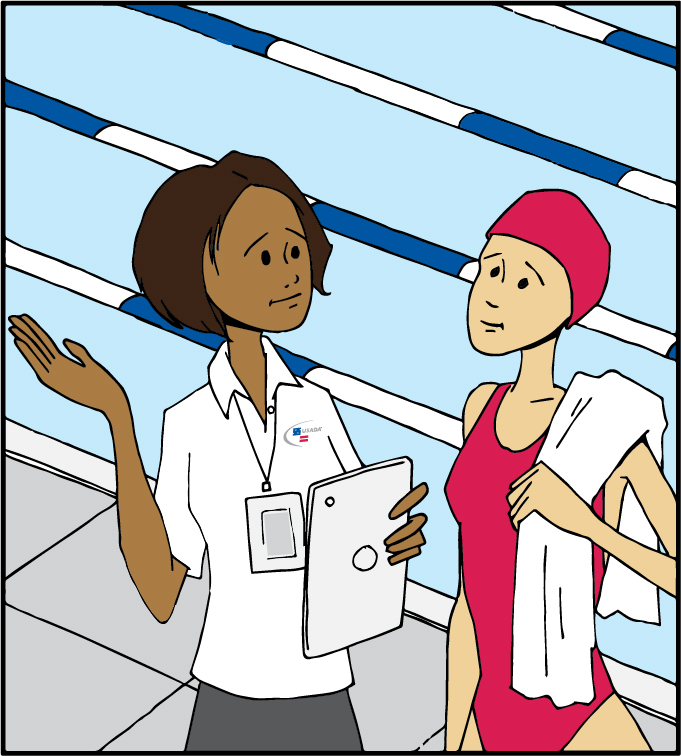 USADA’s drug testing program allows for athletes to be selected for testing both at a competition (in-competition testing) and out-of-competition without any advanced notice, which can occur at any time and at any location. Athletes will be notified of their selection for doping control, by a USADA Doping Control Officer (DCO) or USADA chaperone. At the time of notification, the athlete will be informed of their rights and responsibilities during the sample collection process and be asked to provide photo identification.
USADA’s drug testing program allows for athletes to be selected for testing both at a competition (in-competition testing) and out-of-competition without any advanced notice, which can occur at any time and at any location. Athletes will be notified of their selection for doping control, by a USADA Doping Control Officer (DCO) or USADA chaperone. At the time of notification, the athlete will be informed of their rights and responsibilities during the sample collection process and be asked to provide photo identification.
Doping Control Station
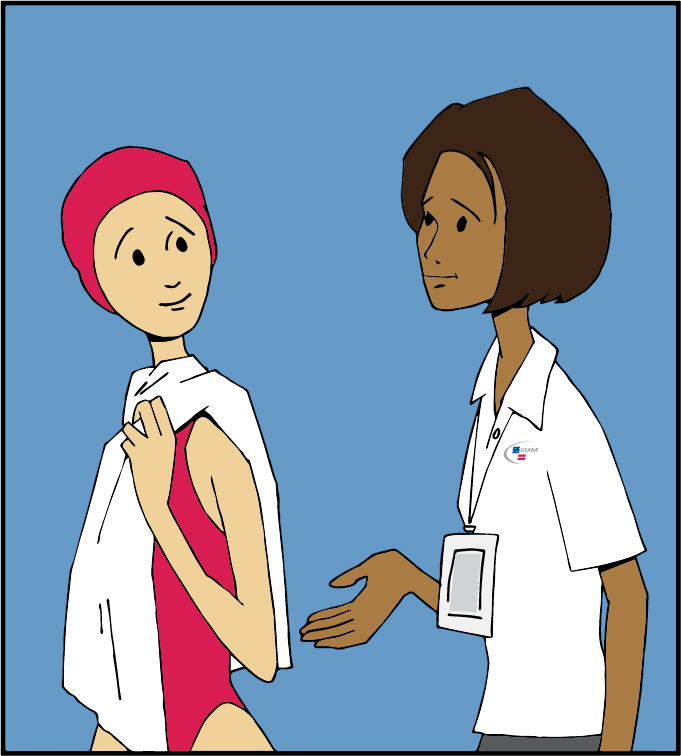
A USADA DCO or chaperone will notify Athletes in person that they have been selected for Testing.
Athletes notified for Testing will be asked to sign a document to acknowledge that they were notified and of their requirement to provide a sample of blood, urine, dried blood spot, and/or any other WADA-approved matrices. Athletes will also be informed of their rights and responsibilities and should carefully read the statements prior to signing. Once athletes are notified of their selection for testing, they must always remain within direct sight of the DCO or chaperone.
Following notification, the athlete will remain under continuous watch (direct observation) of the DCO or chaperone. If the athlete has been notified for in-competition testing, they must immediately report to the doping control station. Under certain circumstances, an athlete may request a delay in reporting for valid reasons; however, this request may not be permitted if it is not possible for the athlete to be continuously chaperoned. Such circumstances may include:
- Competing in further events;
- Participation in a victory ceremony;
- Fulfillment of media commitments;
- Performing a warm down;
- Obtaining necessary medical treatments;
- Locating a representative and/or interpreter;
- Obtaining photo identification; or
- Completing a training session.
Provision of Sample
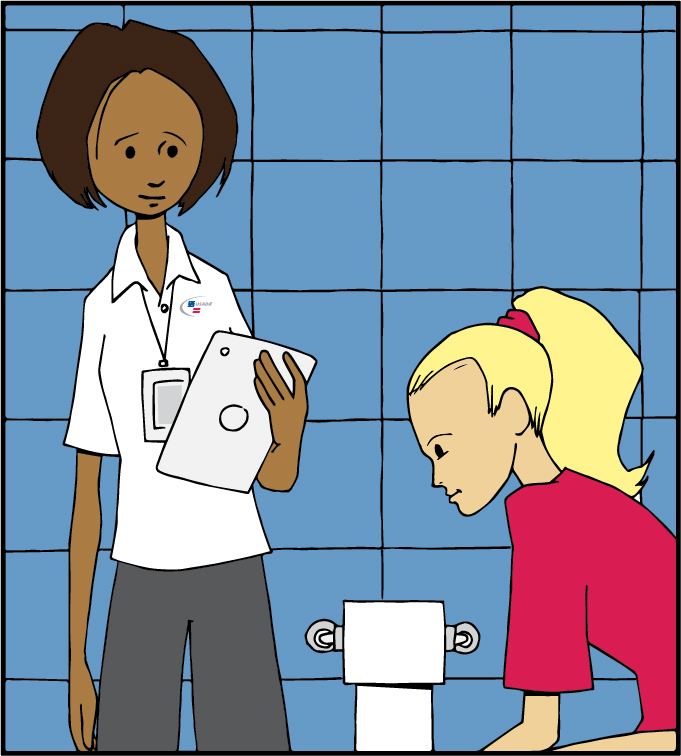 When ready to provide a sample, the athlete will be asked to select a sealed sample collection vessel from a choice of vessels. The athlete should check and inspect the collection vessel to ensure that it has not been tampered with and will be instructed to rinse their hands with only water before opening the vessel. The athlete representative may be present in the toilet area during the provision of the sample with the athlete’s permission and when agreed upon by the DCO.
When ready to provide a sample, the athlete will be asked to select a sealed sample collection vessel from a choice of vessels. The athlete should check and inspect the collection vessel to ensure that it has not been tampered with and will be instructed to rinse their hands with only water before opening the vessel. The athlete representative may be present in the toilet area during the provision of the sample with the athlete’s permission and when agreed upon by the DCO.
The athlete will be asked to provide a urine sample of at least 90ml under direct observation of a DCO or witnessing chaperone of the same gender. For the DCO or chaperone to have a clear view of the sample being provided, the athlete will be asked to remove any bulky clothing, pull their shirt up to mid torso, pants down to mid-thigh and sleeves rolled up their elbows. As soon as the athlete is finished providing the sample, the DCO or chaperone will instruct the athlete to immediately secure the vessel with the lid.
Sample Processing
After the sample is secured, the athlete and the DCO will process the sample and get it ready to ship to the laboratory.
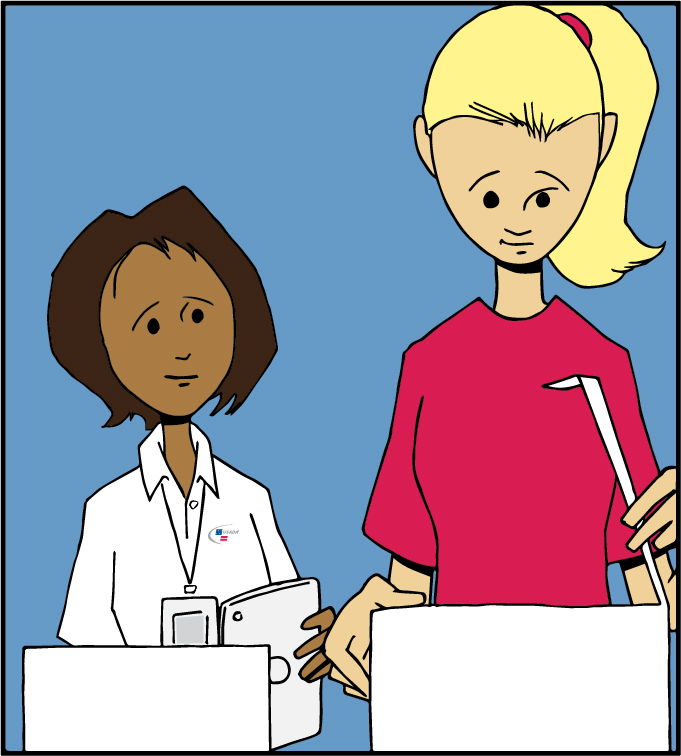 The athlete will first be asked to choose a sample collection kit containing the bottles in which the sample will be sent to the lab. Similar to the way the vessel was chosen, the athlete will choose from a choice of sample collection boxes and ensure that the container is not damaged or tampered with. The athlete will open the sample collection kit and inspect the contents of the package containing an “A” and a “B” bottle, two WADA-certified bags for the samples, and two sheets of sample code stickers. Both the DCO and athlete will ensure that all sample code numbers on the bottles and sample collection kit box match.
The athlete will first be asked to choose a sample collection kit containing the bottles in which the sample will be sent to the lab. Similar to the way the vessel was chosen, the athlete will choose from a choice of sample collection boxes and ensure that the container is not damaged or tampered with. The athlete will open the sample collection kit and inspect the contents of the package containing an “A” and a “B” bottle, two WADA-certified bags for the samples, and two sheets of sample code stickers. Both the DCO and athlete will ensure that all sample code numbers on the bottles and sample collection kit box match.
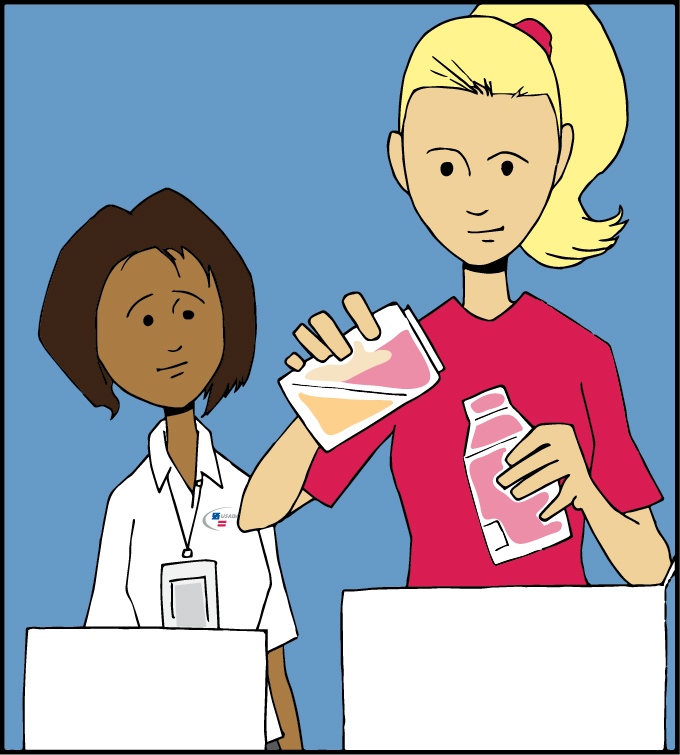 The athlete will then divide the sample between the B Sample and A Sample bottles and seal them. The DCO will not handle any of the equipment during the procedure unless requested to do so by the athlete. The athlete is to maintain control of the sample until the sample is sealed.
The athlete will then divide the sample between the B Sample and A Sample bottles and seal them. The DCO will not handle any of the equipment during the procedure unless requested to do so by the athlete. The athlete is to maintain control of the sample until the sample is sealed.
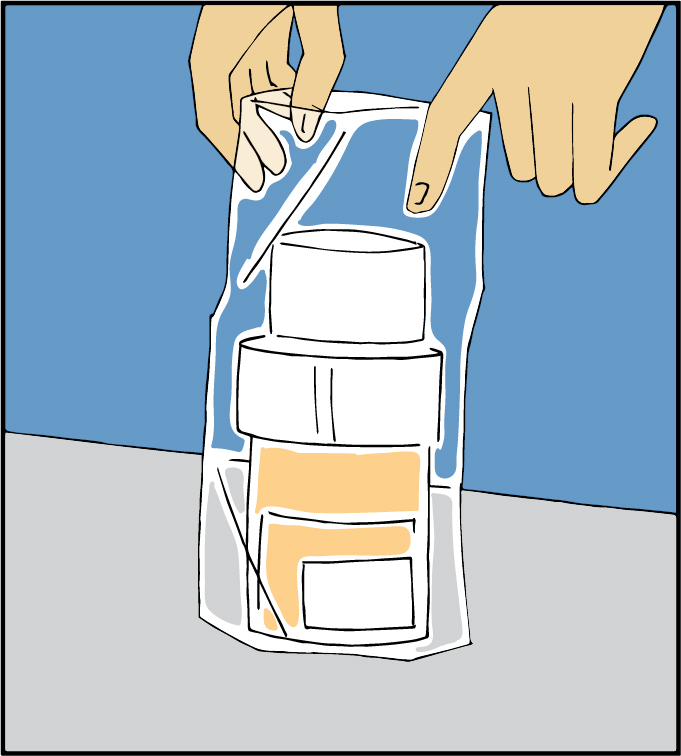 Once the sample is sealed, the athlete will be asked to place the B Sample and A Sample bottles into the WADA-certified bags and cardboard box.
Once the sample is sealed, the athlete will be asked to place the B Sample and A Sample bottles into the WADA-certified bags and cardboard box.
Sample Collection Forms
 The DCO and athlete will complete sample collection forms together, either hard-copy or digitally, to document the circumstances of the sample collection process. Additionally, In accordance with the instructions on the doping control form (DCF), the athlete should declare any substance or medication they may have taken on a Declaration of Use Form. They should also provide details of any Therapeutic Use Exemptions (TUEs) they may have on file.
The DCO and athlete will complete sample collection forms together, either hard-copy or digitally, to document the circumstances of the sample collection process. Additionally, In accordance with the instructions on the doping control form (DCF), the athlete should declare any substance or medication they may have taken on a Declaration of Use Form. They should also provide details of any Therapeutic Use Exemptions (TUEs) they may have on file.
For information on medical declarations including TUEs, please click here.
The athlete should check the entire DCF thoroughly to ensure that the information is accurate. The athlete’s name or personal information will not be listed on the form that goes to the laboratory.
The laboratory reports all results based on the unique sample code numbers. The athlete should keep a copy of the paper or electronic DCF in a safe place.
The sample is then mailed by the DCO to the laboratory for analysis in a transport bag, ensuring a secure chain of custody.
Finally. athletes have the right to provide feedback about the collection session. After each USADA collection session, a USADA DCO will provide the athlete with an Athlete Evaluation Form to provide feedback related to the collection session. USADA encourages athletes to provide feedback about their experience. Every form that is submitted to USADA is reviewed.
To help ensure a level-playing field globally, elite athletes participate in no-notice, in-competition and out-of-competition urine and blood testing in accordance with the World Anti-Doping Agency’s (WADA) International Standards. The sample collection and analysis process is designed to ensure security of the sample during and after collection, as well as sample anonymity during the analysis process.
Click here to explore the six-step journey of a sample, from collection to storage.



